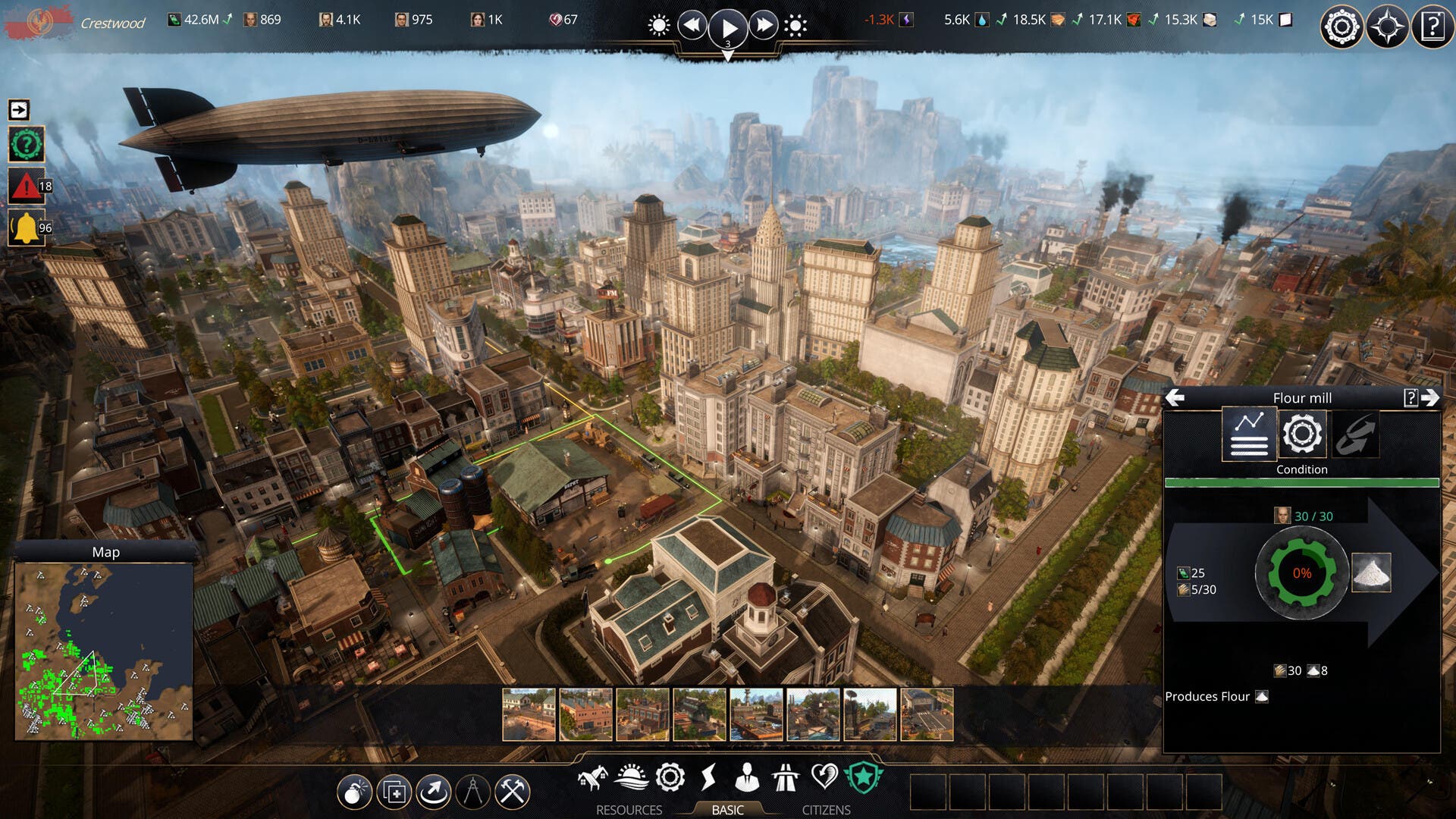There is a subset of games that I like to call “spreadsheet games,” ones that probably have a spreadsheet inside for you to sort of track what you are doing. Games like “Factorio,” “Hearts of Iron IV,” or even “Anno 1800” fall into this category. “Kaiserpunk” also falls deeply into what my friends like to call “Sicko Games.” Games with layered mechanics so deep that even when you’re starting to grasp what you’re getting into, you’re gone. And, reader, I was gone.
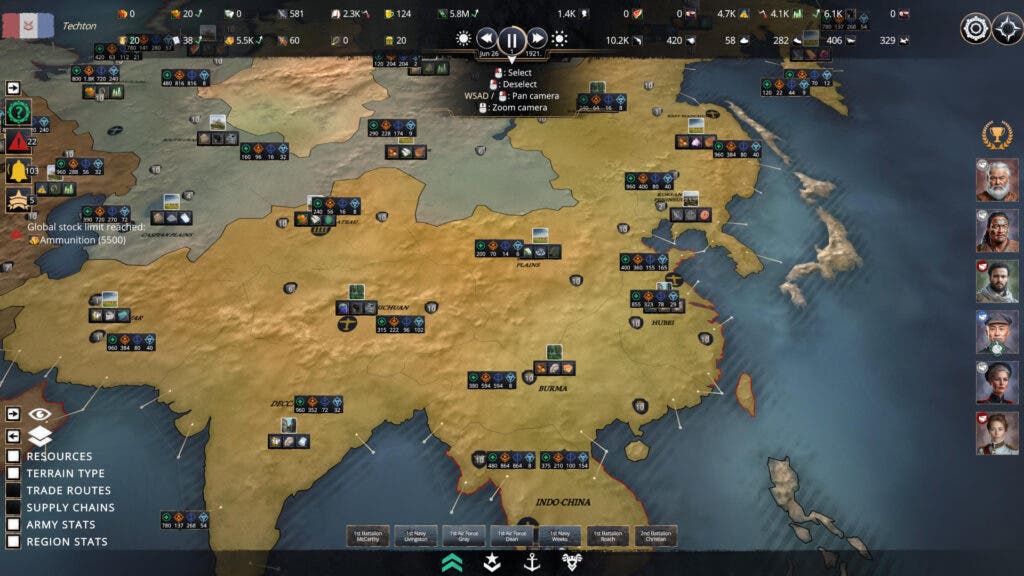
Overseer Games’ second title takes as much inspiration from the Anno franchise as its debut one — “Patron.” This time, the developers steer away from colonization. They aim to craft an alternate history where the First World War ends in a huge disaster, causing city-states to emerge from the aftermath. You, of course, are the governor of one such city.
Before you think about the historical impact of a worse end to the First World War, Overseer Games doesn’t spend much time on how it happened. If anything, the story works as a backdrop and a good way to set up the tutorial — the only time you will see any kind of cutscenes. And I’m glad for that. Writing is not Overseer’s forte, and the few attempts at creating any sort of tension during the tutorial fell really flat for me.
This wasn’t an attempt to dissuade you from doing the tutorial. Quite the opposite, if anything, “Kaiserpunk” is one of the few games in the past few months that playing through it is more than necessary. It’s a bit long, averaging 3 hours if you take your time to read all the tooltips and to start grasping — keyword on grasping — all the mechanics.
But if you played any game based on the “Anno” franchise mechanics, including Overseer’s previous game “Patron,” you already know what to expect. Your city has four tiers of workers, each with their own basic and luxury needs. More workers equals more money and more happiness. More of both means you can build your city faster and more efficiently. Simple, right? Well, no.
In some ways, “Kaiserpunk” is very straightforward. You need a woodcutter to chop wood, a lumber camp to produce lumber, which is then used for building construction. Most games would stop the logistics line here, but Overseer went “Okay, what if we bring up a notch, or maybe 10?”. At least that’s how I hear the developers in my head.
Lumber camps can also be used for other types of lumber, not necessarily focused on your city itself but as an export. Sometimes they are required as a production chain of another more specialized resource. And here’s where the game starts to move away from the “Anno” formula to something more unique in its own way.
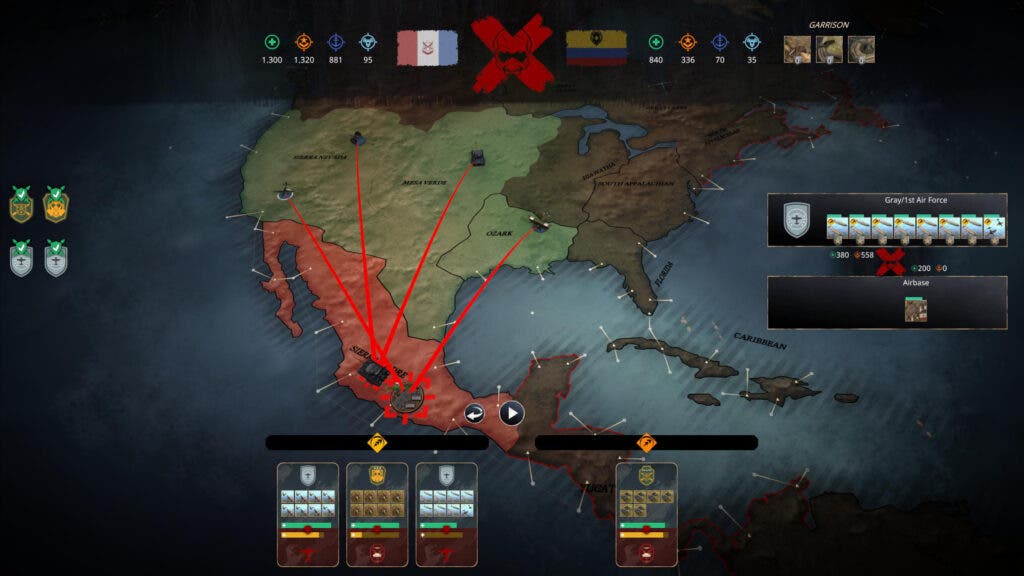
The interwar period, as Overseer calls it, is both a logistics paradise and a nightmare. What differentiates “Kaiserpunk” from other city builders is the “dual layer” of it. On a micro scale you’re building a city and managing its supplies. On a macro scale, you are fighting a war between many city-states on a strategic map. Do you know what wars need? I mean, besides countless human lives lost for no reason. That’s right, supplies.
When I reached the “mid game,” so to speak, I was already starting to field a small army. A couple of infantry, some artillery, and some tanks. Nothing exceptional, but not because I didn’t have the resources, but because I was trying to figure out all the resources.
Let’s take a tank, for instance. You need at the very least two resources delivered to the tank factory to build one: steel and rubber. But before sending it to the army, you also need to train a specialized unit, and that unit requires rations, provided by another factory.
Now that you have gone through all this cycle, let me ask you something: with what ammunition will your tank shoot? Did you forget, by any chance, to build shells? Too bad, now they have to be brought to the frontline and that takes time. Around 20 seconds under “Kaiserpunk” fastest speed, but enough time for the enemy to mount an offensive and destroy your hard work. Am I speaking from personal experience? Yes, I am.
The entire strategy layer having its own mechanics is almost baffling to me as someone who has covered multiple strategy games over the course of the past decade. Overseer games don’t shy away from adding features such as terrain modifiers, veterancy for units, new types of buildings – that, of course, also require some sort of supply – and naval and land blockades. The only aspect that is rather simplified is the combat, which works in turns, and the unit with higher initiative and veterancy goes first. Hence, having a good mix of infantry, tanks, and artillery might help you win the battle. And, yes, I am speaking from personal experience again.
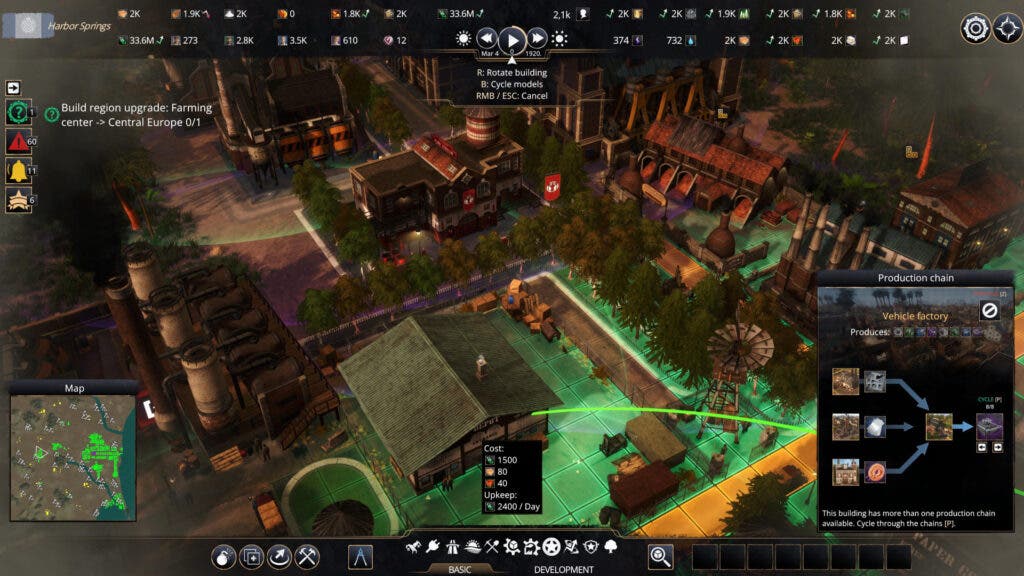
If you think that’s a lot, wait until the kicker: “Kaiserpunk” has 100 regions and also diplomacy. The latter is a mechanic that I only started to dabble with 25 hrs in.
I was unfortunate enough to get a lot of my units locked and with low supply while playing as Brazil after Chile—which took over Argentina, somehow—attacked one of my outposts. I panicked. Struck a bargain that cost me a lot of money, basic needs, and some luxury goods I had.
I got my units back safe and sound. On the other hand, my city almost spiraled down into chaos. Almost all my citizens lacked basic needs, and factories were shutting down left and right. Thankfully (or not), there are no riots in “Kaiserpunk”; otherwise, that would’ve been the end of my playthrough.
You’d think that at this point I would be completely done with “Kaiserpunk.” I spent nearly 40 hours in a single playthrough. I almost spiraled while trying to fix supply chain bottlenecks. Plus, I constantly had to build new homes for my workers. Not at all, really. This is the kind of stuff I live for. It reaches my “dream game” status as close as “Workers & Resources: Soviet Republic.” I barely noticed that I spent a massive chunk of two weekends pretty much playing it day and night. When I said at the beginning of the article that I was gone, trust me, I was really gone.

With all that said, I did wish diplomacy played a bigger role in “Kaiserpunk,” though. Many of my exchanges with other city-states boil down to this: I offer money for goods, or I trade goods for intel or research points.” At some points, it felt like I was the only one who cared about making alliances while others were taking over the world one region at a time.
This is one of the few minor gripes I have with Overseer’s second title. It also lacks some fundamental features, such as having a graph showcasing production and consumption of goods. The developer tries to address it by offering a very customizable UI, but with the number of materials the game has, it’s easy to get lost between trying to manage multiple things at once. Well, at least food doesn’t rot in depots.
And, for all that’s interesting about the idea of city-states rising from the ashes of the first World War, I really wish they would do something more interesting with the setting. There are no experimental technologies nor an ahistorical path for you to take.
I wouldn’t say that the game stalls at one point. The war machine always needs “fuel,” so managing your city, adding new factories, and meeting energy and production demands are never-ending, but it has a tech level ceiling, and at one point you’re moving buildings around to make sure every factory is at its maximum output, every depot is reachable, and can transport goods through the fastest route.
Again, this deeply entices me because I absolutely love to tinker with my city for hours, and “Kaiserpunk” makes it very easy with the option to move buildings without any penalties. If you’re not that kind of macro person, you might feel compelled to either go for a military victory as fast as you can or a diplomatic victory – the easiest one, since the AI seems to accept anything, and conquering the majority of the regions isn’t a huge hassle if you are allied with multiple city-states.
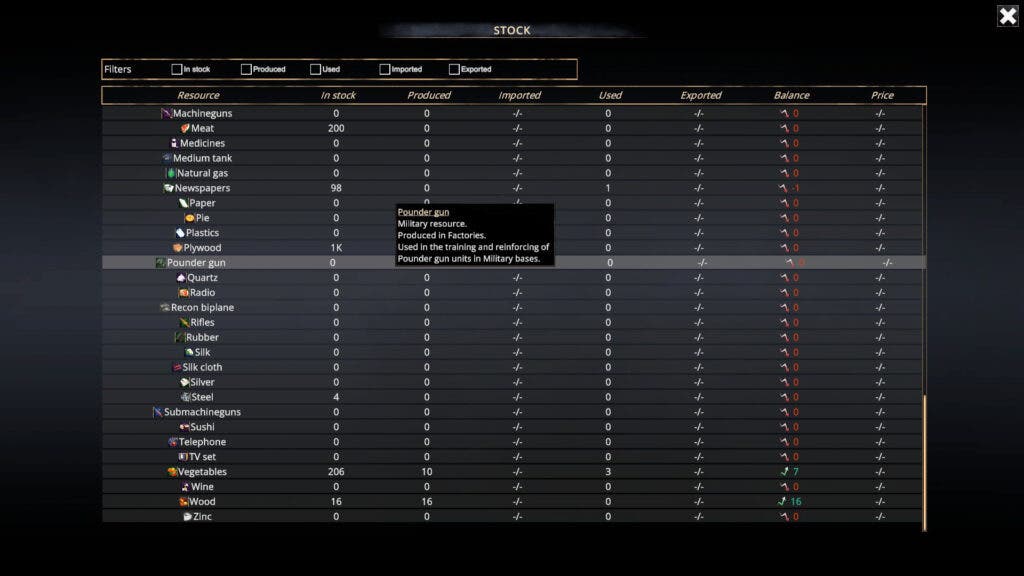
But right near the end, Kaiserpunk did feel a little dull at times. I really wished that random events that happened in Overseer’s previous game, “Patron,” were also included. Never once did I see a factory catch fire, or, as I said before, a riot. It’s a setting ripe for events and they ever so rarely show up outside the early game. I do hope more are added in the future.
And if that sounded a bit nitpicky, it’s because it is. Outside of some annoyances about the UI and some AI actions, “Kaiserpunk” is bold in its scope. Other developers would have shied away from the idea of creating a game that is a logistics manager, a city builder, and a strategy game on a global scale – all at the same time. And for that, it more than deserves recognition.
It’s one of those rare games I will feel compelled to go back to every so often. Try a new strategy, create a new city under specific rules, or even make my own challenges to scratch that wonderful and endless logistics itch.
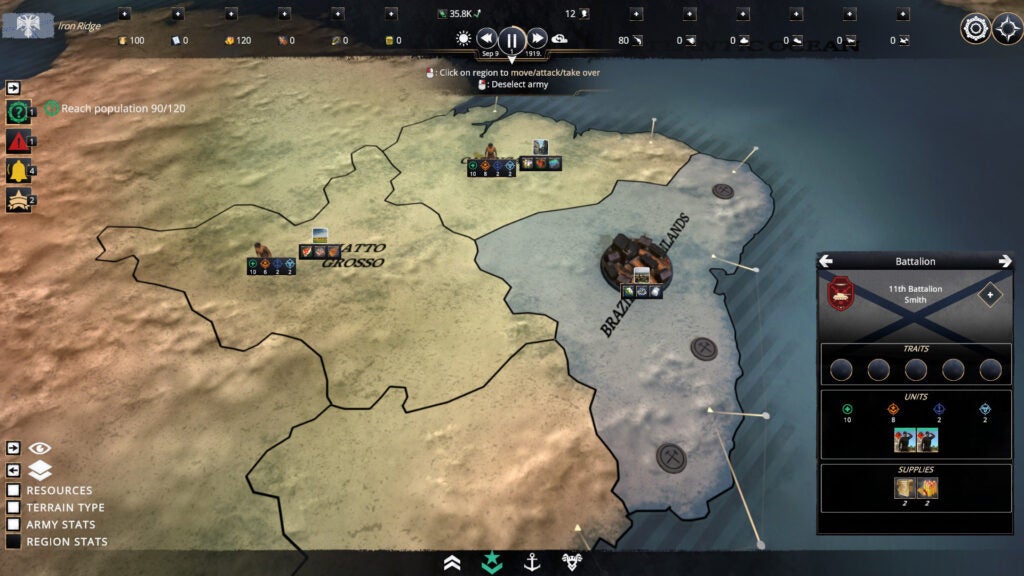
To wrap this up, I remember talking years ago with a friend about an “Anno 2205” mod that added over 50 new goods. “Who would want that? That sounds like a nightmare,” he said. I want that, and “Kaiserpunk” delivers that and more, and oh so much more. Just be sure to check the time every now and then when playing it, okay?
A Steam code was provided in advance by the publisher for review purposes
